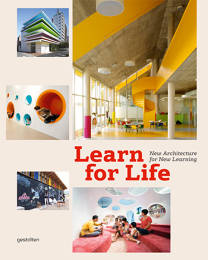There's a place for tech in every classroom.
"Technology is ubiquitous, touching almost every part of our lives, our communities, our homes. Yet most schools lag far behind when it comes to integrating technology into classroom learning. Many are just beginning to explore the true potential tech offers for teaching and learning. Properly used, technology will help students acquire the skills they need to survive in a complex, highly technological knowledge-based economy.
Integrating technology into classroom instruction means more than teaching basic computer skills and software programs in a separate computer class. Effective tech integration must happen across the curriculum in ways that research shows deepen and enhance the learning process. In particular, it must support four key components of learning: active engagement, participation in groups, frequent interaction and feedback, and connection to real-world experts. Effective technology integration is achieved when the use of technology is routine and transparent and when technology supports curricular goals.
Many people believe that technology-enabled project learning is the ne plus ultra of classroom instruction. Learning through projects while equipped with technology tools allows students to be intellectually challenged while providing them with a realistic snapshot of what the modern office looks like. Through projects, students acquire and refine their analysis and problem-solving skills as they work individually and in teams to find, process, and synthesize information they've found online.
The myriad resources of the online world also provide each classroom with more interesting, diverse, and current learning materials. The Web connects students to experts in the real world and provides numerous opportunities for expressing understanding through images, sound, and text.
New tech tools for visualizing and modeling, especially in the sciences, offer students ways to experiment and observe phenomenon and to view results in graphic ways that aid in understanding. And, as an added benefit, with technology tools and a project-learning approach, students are more likely to stay engaged and on task, reducing behavioral problems in the classroom.
Technology also changes the way teachers teach, offering educators effective ways to reach different types of learners and assess student understanding through multiple means. It also enhances the relationship between teacher and student. When technology is effectively integrated into subject areas, teachers grow into roles of adviser, content expert, and coach. Technology helps make teaching and learning more meaningful and fun" (www.edutopia.org).
Integrating technology into classroom instruction means more than teaching basic computer skills and software programs in a separate computer class. Effective tech integration must happen across the curriculum in ways that research shows deepen and enhance the learning process. In particular, it must support four key components of learning: active engagement, participation in groups, frequent interaction and feedback, and connection to real-world experts. Effective technology integration is achieved when the use of technology is routine and transparent and when technology supports curricular goals.
Many people believe that technology-enabled project learning is the ne plus ultra of classroom instruction. Learning through projects while equipped with technology tools allows students to be intellectually challenged while providing them with a realistic snapshot of what the modern office looks like. Through projects, students acquire and refine their analysis and problem-solving skills as they work individually and in teams to find, process, and synthesize information they've found online.
The myriad resources of the online world also provide each classroom with more interesting, diverse, and current learning materials. The Web connects students to experts in the real world and provides numerous opportunities for expressing understanding through images, sound, and text.
New tech tools for visualizing and modeling, especially in the sciences, offer students ways to experiment and observe phenomenon and to view results in graphic ways that aid in understanding. And, as an added benefit, with technology tools and a project-learning approach, students are more likely to stay engaged and on task, reducing behavioral problems in the classroom.
Technology also changes the way teachers teach, offering educators effective ways to reach different types of learners and assess student understanding through multiple means. It also enhances the relationship between teacher and student. When technology is effectively integrated into subject areas, teachers grow into roles of adviser, content expert, and coach. Technology helps make teaching and learning more meaningful and fun" (www.edutopia.org).





